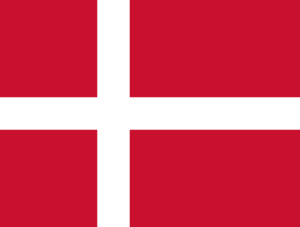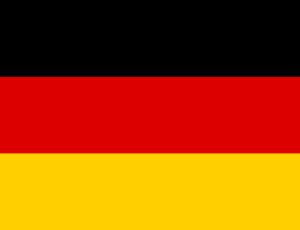Countries with the best education systems are vital to personal growth and societal progress. Education is important at all stages, from primary and secondary schooling to university, so choosing a country that prioritizes national development and caters to children and students with different needs is essential. One way to see if a nation is committed to its educational system is the percentage of GDP allocated to it.
There are other ways to measure a country’s education quality, such as tools like the Education Index and the Quality Index, which evaluate a country’s education system based on aspects like teaching standards, student success, and more. Universities also play a critical role, with rankings like Times Higher Education assessing teaching, research, innovation, and more.
This article delves into the 15 countries with the best education and examines costs, teaching methods, standout university sectors, and more:
What influences world education system rankings?
Different reports assess the quality of a country’s education system using various factors. The two most important tools for this are the Education Index and the Quality Index. These tools focus on making education inclusive for all students, regardless of their needs, and ensuring that teaching standards remain high.
Education Index
The Education Index is part of the Human Development Index (HDI) and measures how well a country provides education. It looks at two things: how many years adults aged 25 and older have been to school, and how many years children are expected to go to school. The score is between 0 and 1, with higher scores showing better education. Countries with scores closer to 1 have stronger education systems, higher literacy rates, and better access to education for everyone.
Quality Index
The Quality Index is a measure from the Global Competitiveness Report published by the World Economic Forum (WEF). It evaluates the overall quality of a country’s education system, considering factors like:
- Teaching Standards: The effectiveness and qualifications of teachers.
- Infrastructure: Availability of schools, learning materials, and technology.
- Curriculum Relevance: Alignment of education programs with market and societal needs.
- Student Outcomes: Academic achievements and skills development.
A higher Quality Index score indicates a stronger, more effective education system that equips students for success in a competitive global economy.
World University Rankings
The Times Higher Education (THE) World University Rankings evaluate universities using five metrics: teaching quality (30%), research volume and reputation (30%), citation impact (30%), international outlook (7.5%), and industry income (2.5%). These factors collectively measure a university’s academic excellence, research influence, global collaboration, and innovation.
15 Countries with the Best Education
 1. Singapore
1. Singapore
- Education Index Scores: 0.95
- Quality index score: 5.87
- Primary & Secondary: Free for citizens, nominal fees for internationals
- University: SGD 8,000-30,000/year;
Singapore’s education system, which receives 3.2% of GDP funding, is known for its efficiency and strength. Starting at age 6, students excel in math, science, and bilingual education, with English as a primary language alongside a mother tongue. Secondary school completion rates are 97%, and 70% of students pursue higher education.
Singapore provides additional tutoring and financial aid for students from low-income families. Its universities, such as the National University of Singapore, are world leaders in business, computer science, and engineering, offering many programs in English. The country’s focus on STEM and innovation prepares students for global competitiveness.
University | University World Rank |
National University of Singapore (NUS) | 19 |
Nanyang Technological University (NTU) | 36 |
Singapore Management University | 801-1000 |
 2. Switzerland
2. Switzerland
- Education Index Scores: 0.92
- Quality index score: 5.75
- Primary & Secondary: Free (ages 4-16)
- University: CHF 1,000-2,000/year
The central European country’s education system is notable for its dual education system, which combines academic study with vocational training and invests 5.1% of its GDP in education. Starting at age 6, the system stresses multilingualism, with students learning at least two of the country’s four official languages.
Secondary education graduation rates are over 90%, with 70% of students opting for vocational programs. These internationally renowned programs prepare students for high-paying careers in industries such as engineering, finance, and hospitality. Switzerland’s universities, including ETH Zurich, excel in engineering and life sciences, offering master’s and doctoral programs in English to cater to international students.
University | University World Rank |
ETH Zurich | 15 |
École Polytechnique Fédérale de Lausanne (EPFL) | 41 |
University of Zurich | 82 |
University of Geneva 95 | 95 |
University of Basel | 103 |
 3. Denmark
3. Denmark
- Education Index Scores: 0.92
- Quality index score: 5.67
- Primary & Secondary: Free (ages 6-16)
- University: Free for EU students;
Denmark is one of the countries that invest heavily in education, spending nearly 6.4% of its GDP on schooling. Education is free from ages 6 to 16, with an additional focus on sustainability, creativity, and project-based learning. The teacher-student ratio is low, which guarantees personalized attention.
About 80% of students graduate from high school, and higher education is free for EU citizens. Denmark strongly supports students needing extra help, including counseling and tailored learning programs. Danish universities are globally recognized for their programs in renewable energy, environmental engineering, and design, with over 700 programs taught in English.
University | University World Rank |
University of Copenhagen | 82 |
Aarhus University | 106 |
Technical University of Denmark | 185 |
Aalborg University | 201-250 |
University of Southern Denmark | 251-300 |
 4. Germany
4. Germany
- Education Index Scores: 0.92
- Quality index score: 5.61
- Primary & Secondary: Free (ages 6-18)
- University: €250-500/Semester
Germany is known for its dual education system, which combines academic learning with vocational training and provides students with theoretical knowledge and practical experience. The country invests 4.8% of its GDP in education and offers free schooling for ages 6 to 18. High school graduation rates are 88%, and 50% of students pursue higher education.
German schools also provide career counseling and additional resources for students with disabilities. Universities like the Technical University of Munich are known to be great in fields such as engineering, automotive studies, and natural sciences.
 5. Finland
5. Finland
- Education Index Scores: 0.91
- Quality index score: 5.60
- Primary & Secondary: Free (ages 6-16)
- University: Free for all students
Finland’s education system is famous for its innovative methods and investment of 5.7% of its GDP in education. Children start school at age 7, and the system focuses on creativity, problem-solving, and student well-being instead of standardized tests. High school graduation rates are high at 96%, with 43% of students attending university. Finland’s schools are inclusive, providing free meals, counseling, and personalized learning plans for students who need extra help.
Finnish universities are known for their strengths in education sciences, healthcare, and technology, offering over 400 programs taught in English. To top it off, teachers in Finland are highly respected and must hold a master’s degree.
University | University World Rank |
University of Oslo | 119 |
University of Bergen | 201-250 |
Norwegian University of Science and Technology (NTNU) | 401-500 |
UiT The Arctic University of Norway | 401-500 |
Norwegian School of Economics | 601-800 |
 6. Norway
6. Norway
- Education Index Scores: 0.9
- Quality index score: 5.47
- Primary & Secondary: Free (ages 6-16)
- University: Free for all students
Norway’s education system is one of the most inclusive and well-funded globally, with the government allocating nearly 6.7% of its GDP to education. Education is free from ages 6 to 16, and higher education is heavily subsidized. Early education encourages creativity, while secondary schools emphasize critical thinking, STEM subjects, and multilingual skills, with English as a core requirement.
High school graduation rates are around 80%, and nearly 43% of students pursue tertiary education. Norway also provides significant support for students needing extra help, including individualized learning plans and free special education services. On the other hand, universities excel in renewable energy, marine biology, and engineering, with many programs taught in English.
University | University World Rank |
University of Oslo | 119 |
University of Bergen | 201-250 |
Norwegian University of Science and Technology (NTNU) | 401-500 |
UiT The Arctic University of Norway | 401-500 |
Norwegian School of Economics | 601-800 |
 7. South Korea
7. South Korea
- Education Index Scores: 0.91
- Quality index score: 5.45
- Primary & Secondary: Free (ages 6-15)
- University: KRW 2,000,000-10,000,000/year;
The South Korean education system is known for its intensity and high expectations. Academic success is highly valued, and students spend long hours in school and have private tutoring sessions known as “hagwons.”
South Korea invests 4.1% of its GDP in education, with one of the highest high school graduation rates globally at 98%. Starting at age 6, the system focuses on technology, the arts, and global competitiveness. Schools provide extra tutoring and government-funded programs for low-income families. Universities, such as Seoul National University, are loved for IT, AI, and biomedical sciences, with many English courses that attract international students.
University | University World Rank |
KAIST (Korea Advanced Institute of Science and Technology) | 39 |
POSTECH (Pohang University of Science and Technology) | 79 |
Seoul National University | 86 |
Yonsei University | 150 |
Korea University | 156 |
 8. Japan
8. Japan
- Education Index Scores: 0.89
- Quality index score: 5.43
- Primary & Secondary: Free (ages 6-15)
- University: ¥500,000-800,000/year
Japan spends 3.5% of its GDP on education, focusing on technology and cultural values from age 6. High school graduation rates are 95%, and 60% of students pursue tertiary education. Schools offer after-hours support classes and dedicated programs for students with special needs.
Students participate in cleaning their schools, which cultivates a sense of responsibility and community. The country strongly emphasizes entrance examinations, which are critical for advancing to higher levels of education. Despite the pressure, Japanese students perform exceptionally well in international assessments, particularly in science and mathematics. Additionally, universities in Japan are known to specialize in robotics, engineering, and medicine, although most of the programs taught in English are at the graduate level.
University | University World Rank |
University of Tokyo | 23 |
Kyoto University | 33 |
Osaka University | 73 |
Tohoku University | 134 |
Keio University | 148 |
 9. Canada
9. Canada
- Education Index Scores: 0.89
- Quality index score: 5.40
- Primary & Secondary: Free (ages 5-18)
- University: CAD 7,000-29,000/year
Canada is another country that invests heavily in education, dedicating 5.9% of its GDP to schooling. Education is free for children aged 6 to 18 and prioritizes bilingualism, STEM, and social sciences. Graduation rates are high, with 88% completing secondary school and 63% pursuing higher education.
Canadian schools offer comprehensive support services, including mental health counseling and special programs for students with disabilities. According to the Global Education Report, Canada comes out on top in especially North America because of its inclusivity and multicultural policies.
The country provides a supportive environment for international students with multicultural universities such as the University of Toronto being globally renowned for research in AI, healthcare, and environmental studies. Nearly all programs are taught in English, with some French options available in Quebec, making Canada an attractive destination for students worldwide.
University | University World Rank |
University of Toronto | 34 |
McGill University | 44 |
University of British Columbia (UBC) | 47 |
Université de Montréal | 111 |
University of Alberta | 132 |
 10. New Zealand
10. New Zealand
- Education Index Scores: 0.89
- Quality index score: 5.43
- Primary & Secondary: Free (ages 5-19)
- University: NZD 22,000-35,000/year
Despite being a relatively small country, education is still an important part of the nation’s budget. New Zealand invests 5.9% of its GDP in education, encouraging outdoor learning, cultural studies, and STEM from age 5. About 90% of students graduate high school, with 40% continuing to higher education.
Schools strongly support indigenous Maori learners and offer personalized learning plans for students with disabilities. New Zealand universities are known for agriculture, education, and environmental science programs, with English as the primary teaching language.
University | University World Rank |
University of Auckland | 139 |
University of Otago | 201-250 |
Victoria University of Wellington | 401-500 |
University of Canterbury | 501-600 |
Massey University | 601-800 |
 11. Sweden
11. Sweden
- Education Index Scores: 0.89
- Quality index score: 5.41
- Primary & Secondary: Free (ages 6-16)
- University: Free for EU students
Sweden is not only one of the safest countries, but it also invests 7.6% of its GDP in education, reflecting its status as one of the highest spenders globally and highlighting the excellence of the Swedish education system. Education is free for children aged 6 to 16, with a curriculum prioritizing sustainability, innovation, and digital literacy. High school graduation rates surpass 90%, and 45% of students continue to university.
Swedish schools are inclusive, providing free therapy, small class sizes, and individualized support for students with disabilities, which makes it one of the best countries to live in, especially for families. Universities like Uppsala University are known to excel in environmental science, technology, and design programs, and many master’s programs are taught in English.
University | University World Rank |
Karolinska Institute | 39 |
Lund University | 119 |
Uppsala University | 131 |
Stockholm University | 176 |
Chalmers University of Technology | 201-250 |
 12. United States
12. United States
- Education Index Scores: 0.89
- Quality index score: 5.39
- Primary & Secondary: Free (ages 5-18)
- University: USD 10,000-70,000/year
The U.S. is recognized for having one of the best education systems globally, with an investment of 5.1% of its GDP in education. Compulsory schooling spans from ages 6 to 18, with 85% of students graduating high school and 37% completing a college degree. Federal programs like the Individuals with Disabilities Education Act (IDEA) provide children with disabilities access to individualized education plans, specialized resources, and additional support.
The U.S. is also home to world-leading universities, with the Massachusetts Institute of Technology (MIT) and Stanford University ranked among the top in the latest Times Higher Education World Rankings. These institutions are renowned for their excellence in technology, medicine, and business, attracting students from around the globe. With nearly all programs taught in English, the U.S. has the largest number of international students worldwide.
University | University World Rank |
Massachusetts Institute of Technology (MIT) | 2 |
Stanford University | 3 |
Harvard University | 4 |
California Institute of Technology (Caltech) | 6 |
University of Chicago | 10 |
 13. United Kingdom
13. United Kingdom
- Education Index Scores: 0.88
- Quality index score: 5.36
- Primary & Secondary: Free (ages 5-18)
- University: £9,250/year (UK/EU)
The UK is known for having one of the best education systems in the world. It dedicates 4.3% of its GDP to education. Compulsory schooling starts from ages 5 to 18, and the curriculum emphasizes critical thinking, STEM, and literature. High school graduation rates are impressive at 94%, with 50% of students advancing to university.
Schools provide extensive support for students with special needs, including dedicated education plans and access to mental health counselors. The UK also has some of the world’s highest-ranking universities, with the University of Oxford ranked #1 and the University of Cambridge ranked #2 in the latest Times Higher Education World Rankings. These institutions excel in law, humanities, and medicine and offer a wide range of programs taught in English, which makes it a good country for those looking for quality education and a second residence.
University | University World Rank |
University of Oxford | 1 |
University of Cambridge | 2 |
Imperial College London | 10 |
University College London (UCL) | 22 |
London School of Economics and Political Science (LSE) | 27 |
 14. Australia
14. Australia
- Education Index Scores: 0,88
- Quality index score: 5.34
- Primary & Secondary: Free (ages 5-17)
- University: AUD 20,000-45,000/year
Australia invests 5.3% of its GDP in education, which translates to high enrollment rates and an average expectation that students will complete over 20 years of schooling. Schooling begins at age 5 or 6 and strongly focuses on STEM, agriculture, and the arts. Around 85% of students complete high school, and 35% pursue higher education.
Australia is notable for its programs supporting disadvantaged students, including subsidies, special education services, and rural teaching incentives. Universities are globally recognized for biotechnology, environmental science, and medicine, with most programs taught in English. With a teacher-student ratio of 14:1, classrooms have individualized attention and strong support systems. As an English-speaking nation with a lot to offer, Australia is also one of the best countries for expats to live in.
University | University World Rank |
University of Melbourne | 34 |
Australian National University | 54 |
University of Queensland | 53 |
Monash University | 57 |
University of Sydney | 60 |
 15. Netherlands
15. Netherlands
- Education Index Scores: 0.87
- Quality index score: 5.33
- Primary & Secondary: Free (ages 5-16)
- University: €1,000-15,000/year (EU students), €6,000-15,000/year (non-EU)
The Netherlands is another one of the European countries with one of the best education systems. The country allocates around 5.4% of its GDP to education and promotes equality, practical skills, and digital literacy from the early stages of schooling at age 5.
Over 90% of students graduate from secondary education, with vocational training routes preparing students for careers in engineering, technology, and healthcare. Dutch schools provide tailored support for students with learning challenges, offering remedial classes and special programs for gifted children. Universities, such as the University of Amsterdam, are known to be good in economics, law, and engineering, offering over 2,000 English-taught programs to attract international students.
University | University World Rank |
Wageningen University & Research | 59 |
University of Amsterdam | 60 |
Utrecht University | 66 |
Leiden University | 77 |
Delft University of Technology | 78 |
Why Choosing a Country with a Good Education System is Important
Better career opportunities
Quality education prepares individuals for better job prospects.
Personal growth
Strong education systems help develop critical thinking and life skills.
Global competitiveness
Good education equips students with knowledge to compete in a globalized world.
Higher standard of living
Education is linked to improved quality of life and higher income.
How Can Global Citizen Solutions Help You?
Global Citizen Solutions is a boutique migration consultancy firm with years of experience delivering bespoke residence and citizenship by investment solutions for international families. With offices worldwide and an experienced, hands-on team, we have helped hundreds of clients worldwide acquire citizenship, residence visas, or homes while diversifying their portfolios with robust investments.
We guide you from start to finish, taking you beyond your citizenship or residency by investment application.

Frequently Asked Questions About Countries with Best Education
Which country has the best education system globally?
Finland’s education system prioritizes equality and high-quality teacher education. Rather than relying on standardized testing, it emphasizes formative assessments and student well-being. It consistently ranks as one of the best educational systems in the world.
Which country tops the education rankings?
Singapore has received praise for the excellent performance of its students in mathematics, science, and reading. The country has a well-regarded education system that focuses on problem-solving and critical thinking skills through effective teaching methods and a curriculum taught by highly trained teachers.
Which is the best technical university in the world?
How do you rank a public education system?
This process is complex due to the diverse nature of educational goals, cultural contexts, and policy environments. However, several common metrics and indicators are widely used to assess the quality and effectiveness of public education systems. Some of the top public education systems take into account aspects like student performance on standardized tests, equity in education, and teacher quality and training.
What is the US education ranking?
According to various reports, like the Education Index, the U.S. ranks around 17th in global education systems. Factors influencing this ranking include high higher education standards, but challenges exist in K-12 public schooling, access to resources, and student outcomes.
Which university has the most students worldwide?
Indira Gandhi National Open University (IGNOU) in India is often cited as the university with the largest student enrollment in the world, which has been reported to exceed several million students at times. IGNOU is a distance learning national university located in New Delhi, India.
How many education levels are there?
The education system has several levels to provide students with foundational skills, advanced knowledge, and specialized training as they progress. The framework usually includes early childhood education, primary education, secondary education, tertiary education, vocational education, training, adult education, and continuing education.
What are the countries with excellent education around the world?
The top 10 countries for education are:
- Finland
- Singapore
- Japan
- South Korea
- Canada
- Netherlands
- Australia
- Switzerland
- New Zealand
- Norway


 1. Singapore
1. Singapore 2. Switzerland
2. Switzerland 3. Denmark
3. Denmark 4. Germany
4. Germany 5. Finland
5. Finland 6. Norway
6. Norway 7. South Korea
7. South Korea 8. Japan
8. Japan 9. Canada
9. Canada 10. New Zealand
10. New Zealand 12. United States
12. United States 15. Netherlands
15. Netherlands
